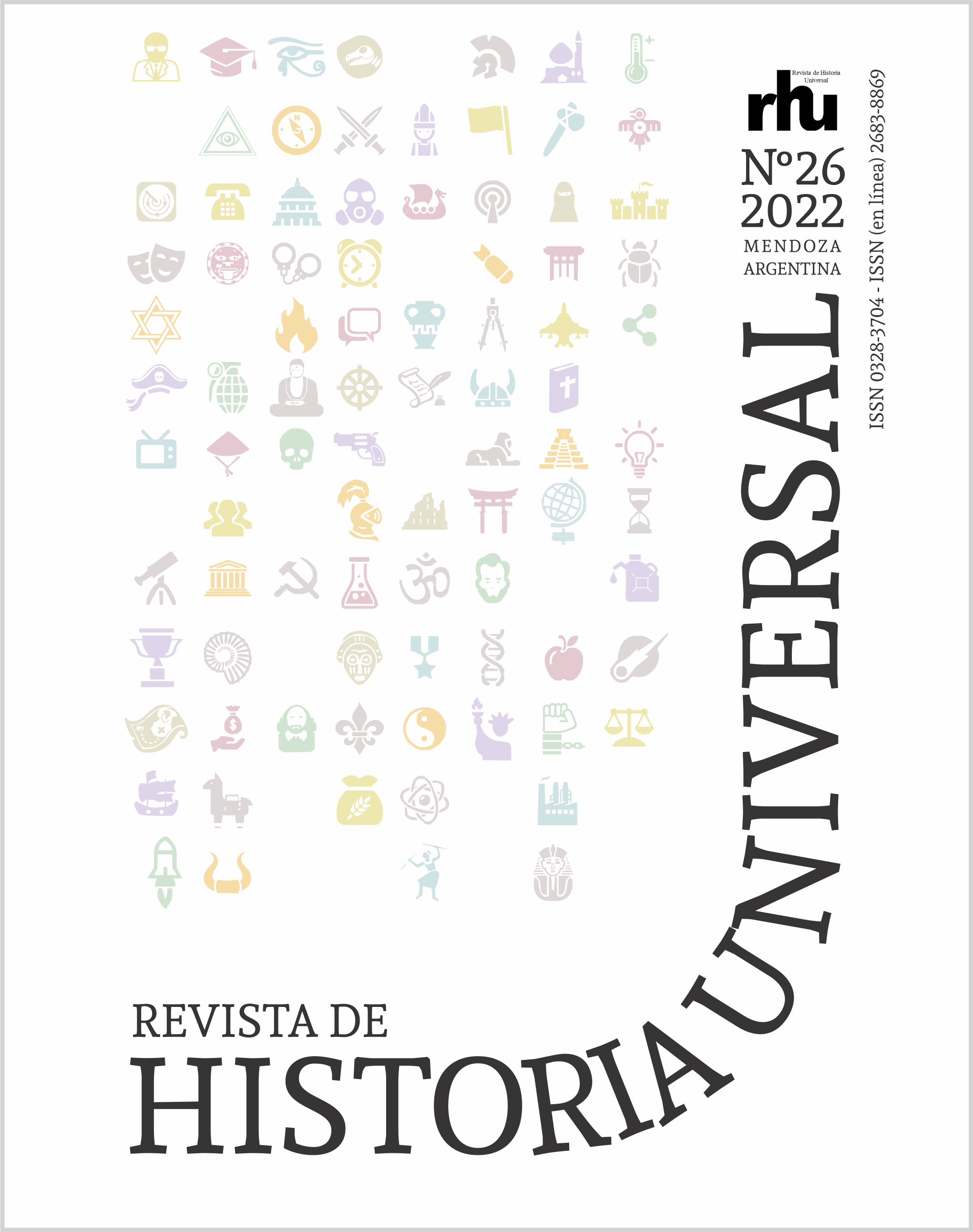The limit between the past and the present in the history
Keywords:
History, past -present- future, intra temporality, events or historical events, pandemicAbstract
This present time, this “now from the present time” introduces a new concern to the historian. But this reflection that we are or have started a new historical time has its risks and also its limitations. The thesis that grounds to this contribution is that History does not look for facts, History states senses through a fabric that weaves past, present and future where the present is the pivot that articulates temporality. We start from the temporality of Martin Heidegger, taken by Paul Ricoeur, to concentrate in a level of “intra temporality” from “the time of preoccupation” and, from there, think about the possibility of fixing our attention on those “events”, unforeseen events that are imposed as exceptional, of breaking and that anticipate its character of historical. It is History that should determine “how to articulate” present and past, how to “differentiate” and establish the “limit”. Can it be, an event like the pandemic of coronavirus (COVID-19) the one that establishes that limit or cut between the past and the present?
References
Agamben, G. (2020). Cuando la casa se quema. Ficción de la Razón. https://ficciondelarazon.org/2020/10/06/giorgio-agamben-cuando-la-casa-se-quema/#more-6124
Ankersmit, F. (2010). La Experiencia Histórica Sublime. Universidad Iberoamericana.
Aróstegui, J. (1995). La Investigación Histórica: Teoría y Método. Crítica.
Aristóteles (1931). De las Virtudes y los Vicios. (F. Gallach Palés, Trad.). Imp. de L. Rubio.
Aristóteles (1985). Ética Nicomáquea. Ética Eudemia. (J. Pallí Bonet, Trad.). Gredos.
Aurell, J. (2008). Tendencias Historiográficas del Siglo XX. Globo Editores.
Aurell, J. (2020). El significado histórico de la pandemia. De tejas arriba. Revista Cultural y de Cuestiones Actuales. Nuestro Tiempo. https://nuestrotiempo. unav.edu/files/2020/04/30-aurell-240420-2.pdf
Belvedresi, R. (2016). Sobre la experiencia histórica. Comentario crítico de David Carr. Experience and History. Phenomenological Perspectives on the Historical World. 32, 83-95. https://doi.org/10.14409/topicos.v0i32.7981
Carr, D. (1986). La narrativa y el mundo real: un argumento en favor de la continuidad. Revista de la Dirección de Estudios Históricos del Instituto Nacional de Antropología e Historia. 14, 15-28. https://www.estudioshisto ricos.inah.gob.mx/revistaHistorias/?cat=584
Cicerón, M. T. y Valbuena, M. (1778). Los Oficios de Cicerón: con los diálogos de la Vejez, de la Amistad, las Paradoxas, y el Sueño de Escipión. Imprenta Real. https://doi.org/10.34720/h6xn-0h48
Cicerón, M. T. (1997). La Invención Retórica. Gredos. https://www.pieresko.net.ar /libros/Gredos/Cicer%C3%B3n%20-%20La%20invenci%C3%B3n%20de%2 0la%20ret%C3%B3rica.pdf
De Certeau, M. (1993). La Escritura de la Historia. Universidad Iberoamericana. Departamento de Historia.
Gombrich, E. (2016, mayo 31). La Obra: El Bosco en el Museo del Prado. El País. https://elpais.com/especiales/2016/el-bosco/la-obra.html
Hartog, F. (2007). Regímenes de Historicidad. Presentismo y Experiencia del Tiempo. Universidad Iberoamericana.
Hobsbawm, E. (1998). Sobre la Historia. Crítica.
Ierardo, E. (2020). Jean Luc-Nancy. En la era de la fragilidad. Revista Ñ. https://www.clarin.com/revista-enie/ideas/jean-luc-nancy-fragilidad_0_Vy _iExbEk.html
Kafka, F. (1977). Él. Editorial Goncourt.
Koselleck, R. (1993). Futuro Pasado. Para una Semántica de los Tiempos Históricos. Paidós.
Radetich Filinich, N. (2019). La mirada etnográfica de Charles Chaplin: la crítica del capitalismo en Tiempos modernos. Culturales, 7, 1-42. https://doi.org/10.22 234/recu.20190701.e452
Marías, F. (2016). El Bosco, artista de invenciones. El Cultural. https://elcultural. com/El-Bosco-artista-de-invenciones
Nancy, J. L. (2020). Un Virus Demasiado Humano. Ediciones La Cebra.
Onfray, M. (2016, mayo 31). La Obra: El Bosco en el Museo del Prado. El País. https://elpais.com/especiales/2016/el-bosco/la-obra.html
Spinney, L. (2018). EL jinete pálido. 1918: La epidemia que cambió el mundo. Crítica.
Spiegel, G. (2019). David Carr´s Theory of experiencing times past. History and Theory, Theme Issue 56 responses. S15-S19. https://onlinelibrary.wiley. com/doi/epdf/10.1111/hith.12095
Serna Arango, J. (2009). Somos tiempo. Crítica a la simplificación del tiempo en Occidente. Anthropos.
Tanuro, D. (2020). Una crisis global, sistémica y sin precedentes. Ficción de la Razón. https://ficciondelarazon.org/2020/06/19/DANIEL-
TANURO-UNA-CRISIS-GLOBAL-SISTEMICA-Y-SIN-PRECEDENTES/#MORE-5899
Ricoeur, P. (2000). La Memoria, la Historia y el Olvido. Fondo de Cultura Económica.
Ricoeur, P. (1999). Historia y Narratividad. Paidós.
Villacañas Berlanga, J. L. (2020, mayo 20). ¿Por qué no vemos alternativa al capitalismo? El País. https://elpais.com/ideas/2020-05-29/el-neoliberalis mo-hace-que-consideremos-al-capitalismo-como-lo-natural.html
Walton, R. (2001). La tradición como transmisión generadora de sentido en la fenomenología hermenéutica de P. Ricoeur. En R. Ferrara y C. Galli (Eds.). El tiempo y la historia. Reflexiones interdisciplinares. Paulinas.
Downloads
Published
How to Cite
Issue
Section
License

This work is licensed under a Creative Commons Attribution-NonCommercial-ShareAlike 4.0 International License.







